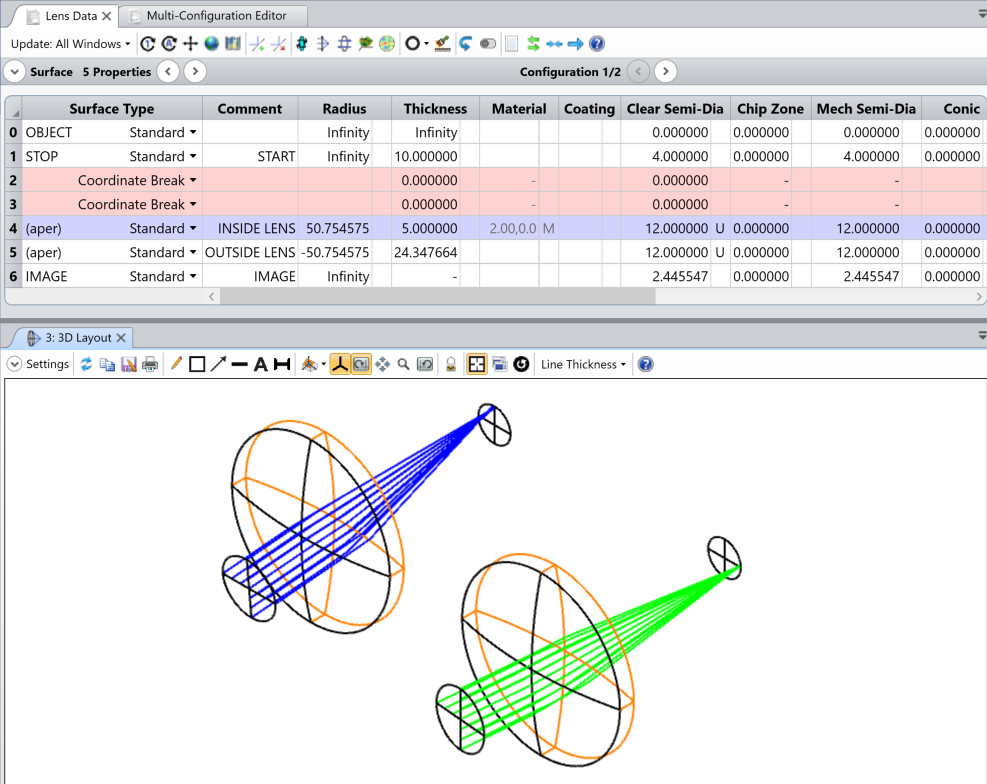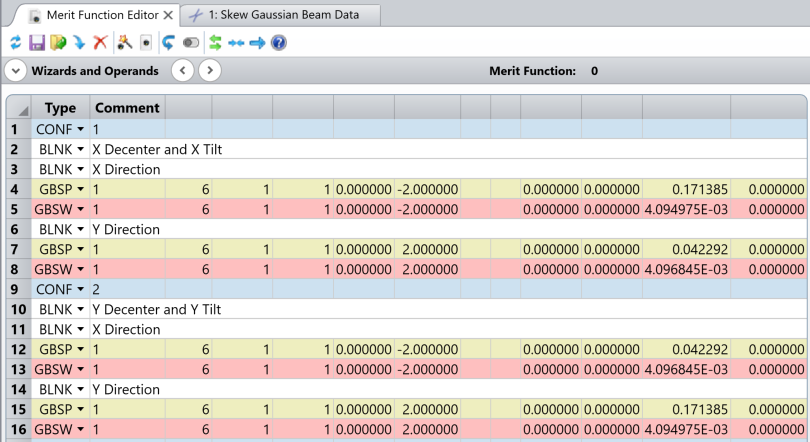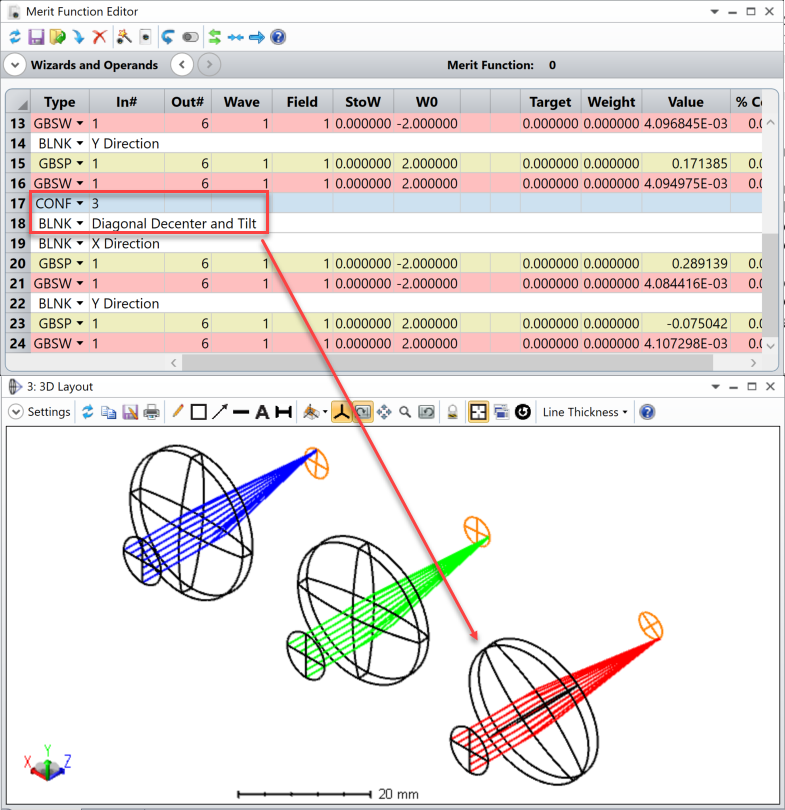Hello,
I have the following question:
I have a spherical curved refracting surface with n=2 and a gaussian beam with distance d between beam waist and the point where the beam hits this surface. I am analyzing the beam parameters z0 (=waist location) and w0 (=waist diameter) after the refraction (GBSP, GBSW). This works fine and the results follow my theory.
Then I implemented a vertical decenter of the refracting surface. This also works fine. The results look okay.
When I implement a surface tilt instead of the surface decenter...also everything works fine.
Then I tried the following:
I first implemented a surface decenter with a coordinate break 1 and then a surface tilt with another coordinate break 2. And now I get results that make me doubt…
Then I made the following: I compared the results of 2 scenarios:
Scenario A: tilt 1, decenter 1.
Scenario B: tilt 2, decenter 2.
I have choosen tilt 2 and decenter 2 in a way that in both cases A and B angle of incidence (RAID) and distance d (RAGZ) are the same. Because it is a spherical surface I would assume that Zemax provides in both cases the same beam results for the refracted beam. But this is not the case.
Can someone help to clearify this?
Thanks in advance and best regards
Dirk







